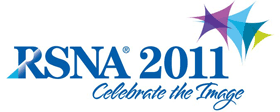
Abstract Archives of the RSNA, 2011
LL-CHS-SU8B
Sinogram-affirmed Iterative Reconstruction for Improving Image Quality of Low Radiation Dose Chest CT
Scientific Informal (Poster) Presentations
Presented on November 27, 2011
Presented as part of LL-CHS-SU: Chest
Stephan Baumueller, Abstract Co-Author: Nothing to Disclose
Anna Winklehner, Presenter: Nothing to Disclose
Robert Goetti, Abstract Co-Author: Nothing to Disclose
Christoph Alexander Karlo MD, Abstract Co-Author: Nothing to Disclose
Markus Manz, Abstract Co-Author: Nothing to Disclose
Erich Russi, Abstract Co-Author: Nothing to Disclose
Thomas Frauenfelder MD, Abstract Co-Author: Nothing to Disclose
Hatem Alkadhi MD, Abstract Co-Author: Nothing to Disclose
To prospectively assess the impact of raw data-based sinogram-affirmed iterative reconstruction (SAFIRE) on image quality of non-enhanced low radiation dose chest CT as compared to conventional filtered back projection (FBP).
Non-enhanced low radiation dose 64-section CT of the chest (reference tube current-time product 30mAs, rotation time 0.5sec, pitch 0.6) was performed on 30 consecutive patients (14 women, 16 men, mean age 50.8±21.6y) at 100kV and on 30 consecutive patients (20 women, 14 men, mean age 52.7±17.6y) at 80 kV. Images were reconstructed using the FBP and with SAFIRE, the latter representing an iterative optimization process that reduces image noise using a modelling technique supported by raw data. Two blinded readers independently assessed image noise and two other blinded readers independently assessed image quality on a five-point scale (score 1: excellent to 5: non-diagnostic), and identified normal anatomic lung structures in each CT dataset. Radiation dose parameters were recorded.
Image noise in datasets reconstructed with FBP was significantly higher than with SAFIRE (57.4±15.9 and 31.7±9.8, respectively, p<0.001 each). Image quality at 100kV and 80kV was significantly superior when images were reconstructed with SAFIRE as compared to FBP (p<0.01, each). Image quality of reconstructions with FBP at 100kV were not significantly different from image quality of reconstructions with SAFIRE at 80kV (p=0.68). Diagnostic image quality for the assessment of normal lung structures was present in 96% among reconstructions with FBP at 100kV, in 84% with FBP at 80kV, in 100% with SAFIRE at 100kV, and in 98% with SAFIRE at 80kV. Mean estimated effective dose at 80kV (0.56±0.18 mSv) was significantly lower than that at 100 kV (0.81±0.23 mSv, p<0.001).
Raw data-based sinogram-affirmed iterative reconstruction reduces noise and improves image quality of non-enhanced chest CT while enabling a correct depiction of pulmonary structures at a very low radiation dose.
Raw data-based iterative reconstruction should be used in patients undergoing non-enhanced chest CT for allowing scanning at a very low radiation dose.
Baumueller, S,
Winklehner, A,
Goetti, R,
Karlo, C,
Manz, M,
Russi, E,
Frauenfelder, T,
Alkadhi, H,
Sinogram-affirmed Iterative Reconstruction for Improving Image Quality of Low Radiation Dose Chest CT. Radiological Society of North America 2011 Scientific Assembly and Annual Meeting, November 26 - December 2, 2011 ,Chicago IL.
http://archive.rsna.org/2011/11034451.html

